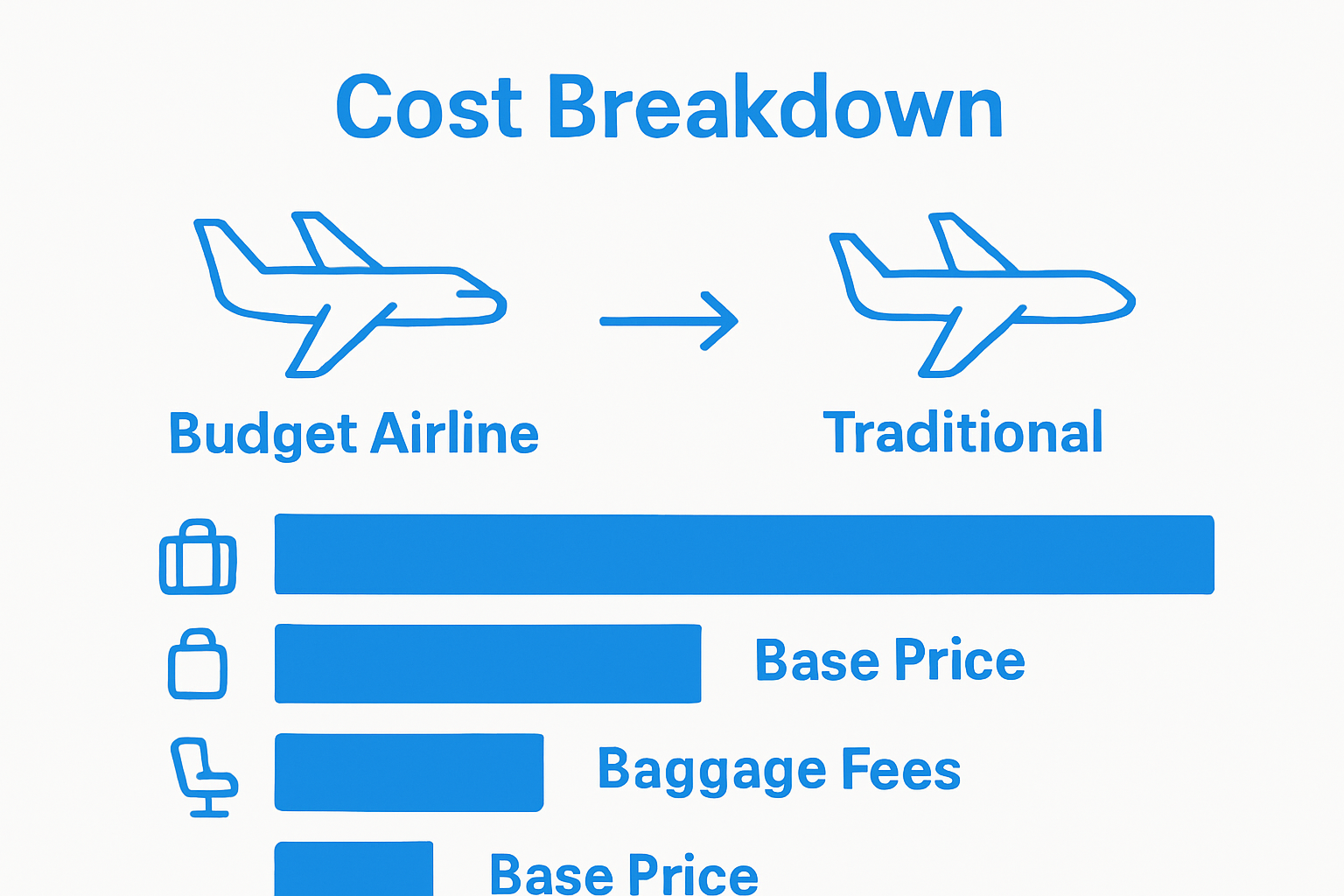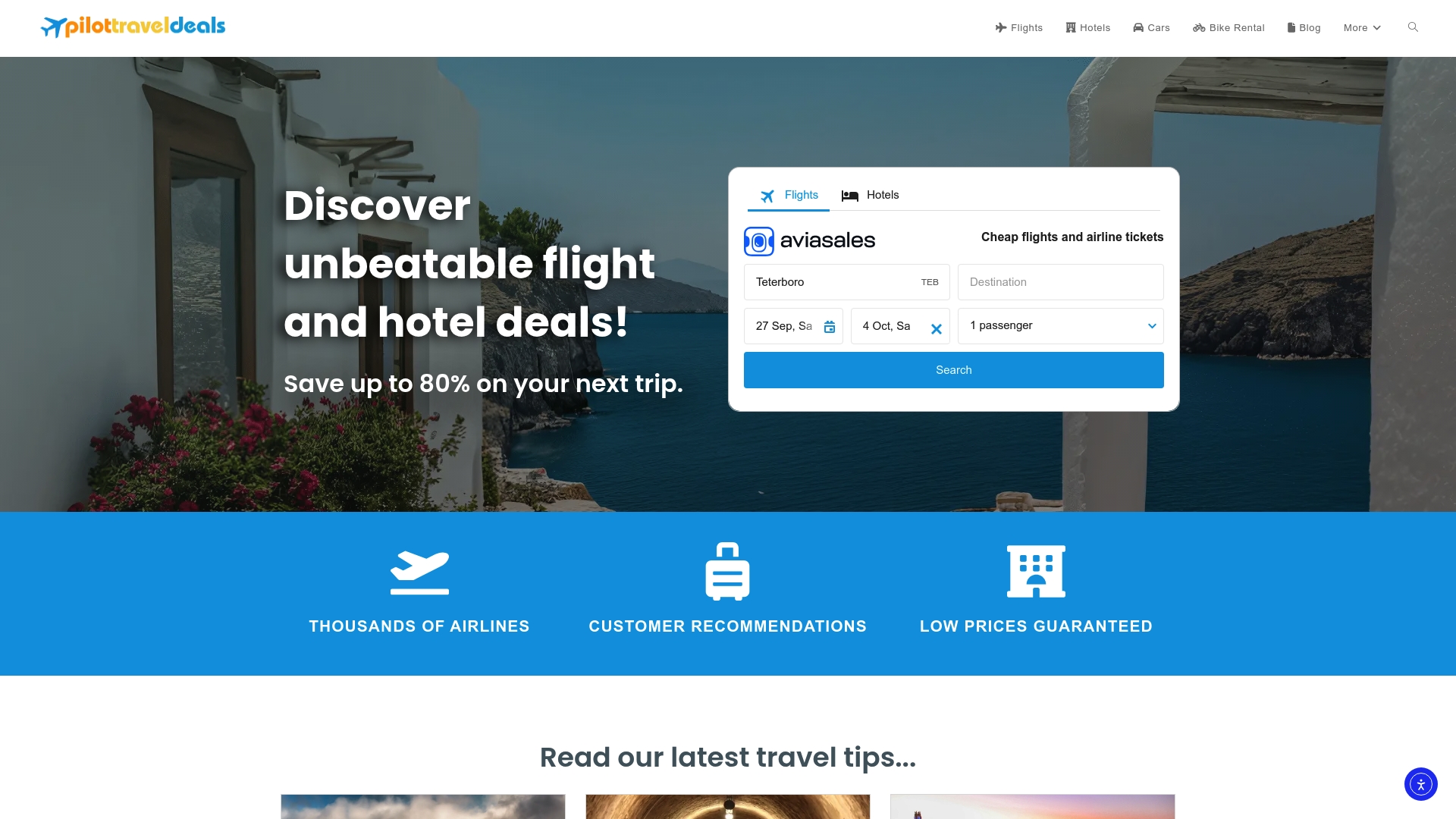Flying for less used to sound impossible and luxury airlines dominated the skies. Now budget airlines have changed the rules, offering tickets at prices sometimes up to 40 percent cheaper than traditional carriers. The real surprise is that these savings do not come from flashy marketing or lucky deals but from a totally different way of running an airline that unlocks smart travel in ways most people never expect.
Table of Contents
- What Are Budget Airlines And How Do They Differ?
- Why Is It Important To Check Budget Airlines?
- Understanding The Pricing Dynamics Of Budget Airlines
- Key Concepts Of Budget Travel Benefits
- Real-World Examples Of Successful Budget Travel
Quick Summary
| Takeaway | Explanation |
|---|---|
| Budget airlines focus on low prices | They operate a no-frills model, offering lower base fares by eliminating extra services. |
| Total travel costs must be evaluated | Be aware of additional charges for services like baggage and seat selection to avoid surprises. |
| Dynamic pricing strategies affect ticket costs | Prices fluctuate based on demand, competition, and remaining seats, impacting overall travel expenses. |
| Smart comparison can yield significant savings | Investigate different airlines carefully to find the best overall value, potentially saving up to 40% on transportation. |
| Budget travel boosts financial freedom | Implementing budget strategies can allow for more travel opportunities without financial strain. |
What Are Budget Airlines and How Do They Differ?
Budget airlines represent a revolutionary approach to air travel that fundamentally transforms how travelers access transportation services. Unlike traditional carriers, these airlines operate on a stripped-down business model designed to offer significantly lower ticket prices by minimizing operational costs and maximizing efficiency.
The Core Business Model of Budget Airlines
Budget airlines specialize in providing no-frills transportation services that prioritize affordable pricing over traditional comfort amenities. According to research from the Congressional Research Service, these carriers utilize a point-to-point service model that allows for higher aircraft utilization rates compared to legacy carriers.
Key characteristics of budget airlines include:
- Simplified fare structures with base prices significantly lower than traditional airlines
- Reduced in-flight services and amenities
- Strategic use of secondary airports to reduce landing and operational fees
- Rapid turnaround times for aircraft between flights
- Unbundled pricing where passengers pay separately for additional services
Understanding the Cost-Cutting Strategies
The secret behind budget airlines’ low prices lies in their innovative cost-reduction techniques. These carriers eliminate expensive overhead by streamlining operations and passing savings directly to consumers. Learn more about travel cost optimization in our comprehensive budget travel planning guide.
Most budget airlines achieve significant savings through:
- Using a single aircraft type to reduce maintenance and training costs
- Implementing digital-first booking and customer service platforms
- Charging for additional services like baggage, seat selection, and onboard meals
- Maximizing seat density by configuring aircraft with more seats per plane
By understanding these strategies, travelers can make informed decisions about whether budget airlines align with their travel needs and expectations. While these carriers offer substantial cost savings, passengers must carefully evaluate the total travel expenses, including potential additional fees.
The table below compares core features of budget airlines versus traditional airlines to help you understand the main differences when planning your travels.
| Feature | Budget Airlines | Traditional Airlines |
|---|---|---|
| Business Model | No-frills, cost-cutting | Full-service, inclusive pricing |
| Base Fare | Significantly lower; covers only transportation | Higher; usually includes multiple services |
| In-flight Amenities | Minimal or extra | Included (meals, entertainment, etc.) |
| Airport Selection | Often uses secondary airports | Usually uses major airports |
| Pricing Structure | Unbundled and highly customizable | Bundled, less flexible |
| Operational Efficiency | Rapid turnarounds, single aircraft type | More complex fleet and longer turnaround |
| Additional Fees | Common for baggage, seat selection, and meals | Fewer fees; many services included in ticket price |
Why is it Important to Check Budget Airlines?
Checking budget airlines is more than a simple cost-saving exercise it is a strategic approach to smart travel planning. Travelers who thoroughly investigate budget airline options can unlock significant financial advantages and travel opportunities that might otherwise remain hidden.
Financial Benefits and Cost Transparency
Budget airlines offer travelers unprecedented opportunities to reduce overall travel expenses. Research from the Airlines Reporting Corporation indicates that strategic airline selection can lead to savings of up to 40% on transportation costs.
Key financial advantages include:
- Dramatically lower base ticket prices compared to traditional carriers
- Flexibility in selecting only necessary travel services
- Potential for allocating saved funds to other travel experiences
- Opportunities to explore destinations previously considered financially out of reach
Understanding Hidden Costs and Comparison Strategy
Successful budget airline navigation requires a comprehensive approach to price comparison. Learn more about strategic travel cost optimization in our comprehensive budget travel tips guide.
Critical considerations when checking budget airlines involve:
- Comparing total trip costs including additional fees
- Reviewing baggage allowance and associated charges
- Analyzing seat selection and boarding pass printing expenses
- Evaluating cancellation and modification policy costs
By meticulously examining budget airline offerings, travelers transform potential risks into calculated travel investments. The key is not just finding the lowest price but understanding the complete financial landscape of your journey. Budget airlines demand an active, informed approach to travel planning where every expense is purposefully evaluated and strategically managed.
Understanding the Pricing Dynamics of Budget Airlines
Budget airline pricing is a complex ecosystem driven by sophisticated algorithms and strategic market positioning. These carriers have revolutionized travel economics by creating intricate pricing models that differ dramatically from traditional airline approaches.
Dynamic Pricing Strategies
Modern budget airlines employ advanced algorithmic pricing techniques that adjust ticket costs in real time based on multiple variables. According to research from MIT Sloan School of Management, these dynamic models can change prices multiple times within a single day depending on demand, competition, and booking patterns.
Key elements influencing budget airline pricing include:
This table organizes the major factors that influence budget airline ticket pricing, offering a quick overview of the variables that impact what you actually pay.
| Pricing Factor | Description |
|---|---|
| Demand Fluctuations | Ticket prices rise and fall based on overall passenger demand |
| Remaining Seat Inventory | Fewer available seats often mean higher prices as flights fill up |
| Time Until Departure | Prices usually increase as the departure date approaches |
| Competitive Pricing | Rival airline rates can trigger price adjustments |
| Seasonal Travel Trends | High seasons or holidays increase prices due to demand |
| Booking Data Analytics | Algorithms predict and influence prices using booking history |
- Demand fluctuations and seasonal travel trends
- Remaining seat inventory
- Time until departure
- Competitive pricing from other carriers
- Historical booking data and predictive analytics
Unbundled Pricing Model
The cornerstone of budget airline pricing is the unbundled pricing strategy, which allows passengers to pay exclusively for services they require. Explore the intricacies of airline fare structures in our comprehensive guide.
Critical components of the unbundled approach involve:
- Base fare representing only transportation cost
- Separate charges for baggage
- Optional seat selection fees
- Charges for priority boarding
- On-board meal and entertainment purchases
This granular pricing approach enables budget airlines to offer remarkably low base fares while generating additional revenue through customizable service add-ons.
 By transforming traditional pricing structures, these carriers provide travelers unprecedented flexibility in managing their travel expenses, ultimately democratizing air travel accessibility.
By transforming traditional pricing structures, these carriers provide travelers unprecedented flexibility in managing their travel expenses, ultimately democratizing air travel accessibility.
Key Concepts of Budget Travel Benefits
Budget travel represents a strategic approach to exploring the world while maintaining financial prudence. It is not about sacrificing experiences but rather maximizing value and creating opportunities through intelligent planning and resourceful decision making.
Financial Empowerment Through Smart Travel
Budget travel transcends mere cost cutting it is a comprehensive philosophy of travel that enables individuals to expand their horizons without exhausting their financial resources. Research from the World Tourism Organization suggests that travelers who adopt strategic budget approaches can extend their travel experiences by up to 60% compared to traditional travel models.
Key financial advantages include:
- Reducing overall trip expenditure
- Creating opportunities for more frequent travel
- Developing financial discipline and planning skills
- Accessing destinations previously considered unaffordable
- Learning creative resource management techniques
Experiential Benefits Beyond Cost Savings
Discover comprehensive strategies for affordable global adventures in our travel tips guide.
The benefits of budget travel extend far beyond monetary considerations:
- Enhanced problem solving skills
- Greater cultural immersion
- Increased adaptability and resilience
- Development of independent travel capabilities
- Broader perspective on global diversity
By embracing budget travel principles, individuals transform travel from a luxury experience into an accessible, enriching journey of personal growth and discovery. The true value lies not just in the destinations reached but in the transformative process of navigating travel with creativity, intelligence, and financial mindfulness.
Real-World Examples of Successful Budget Travel
Successful budget travel is not a mythical concept but a tangible reality demonstrated by countless travelers who have mastered the art of exploring the world economically. These real-world examples illustrate how strategic planning and resourceful approaches can transform travel from a luxury experience into an accessible adventure.
Solo Traveler Budget Strategies
Research from the European Parliamentary Research Service690586_EN.pdf) highlights how budget airlines have revolutionized individual travel opportunities, enabling more people to explore destinations previously considered out of reach. Solo travelers have particularly excelled in developing innovative budget travel techniques.
Successful solo traveler approaches include:
- Utilizing budget airlines for international transportation
- Choosing hostels and shared accommodations
- Employing travel reward credit card strategies
- Implementing strict daily spending limits
- Leveraging local transportation options
Long Term Travel on a Budget
Explore more strategies for affordable global adventures in our comprehensive guide.
Long term travelers demonstrate remarkable budget management skills through:
- Working holiday visas in different countries
- Remote work while traveling
- Housesitting and work exchange programs
- Slow travel approach minimizing transportation costs
- Developing local language skills for better negotiation
These practical examples prove that budget travel is not about deprivation but about intelligent resource allocation. Successful budget travelers understand that experiences matter more than expensive amenities, transforming financial constraints into opportunities for deeper, more meaningful global exploration.

Transform The Way You Find Budget Flights With PilotTravelDeals.com
Are you struggling to compare the true costs of budget airlines or anxious about missing hidden fees that could wreck your travel budget? As outlined in this article, understanding the difference between base fares and extra charges is crucial. Too often, travelers feel uncertain about making confident booking decisions or waste hours searching for genuine savings.
Explore practical solutions and expert tips directly in our Miscellaneous category, where we highlight smart strategies to stretch your travel funds further and reveal the tricks to successful airfare comparison.

Take control of your travel planning now with PilotTravelDeals.com. Browse up-to-date deals on flights, hotels, and more—all in one place without the stress of hidden surprises. Whether your goal is adventure or just smarter spending, our site makes finding and booking the best value trips straightforward. Compare, plan, and book today to unlock maximum savings for your next journey.
Frequently Asked Questions
What are budget airlines?
Budget airlines are carriers that offer lower ticket prices by minimizing operational costs, providing no-frills services, and charging for additional amenities and services.
How do budget airlines differ from traditional airlines?
Budget airlines operate on a no-frills model, offering lower base fares but charging extra for services like baggage, seat selection, and in-flight meals, unlike traditional airlines that typically include these in the ticket price.
What should I consider when comparing budget airlines?
When comparing budget airlines, look at the total trip cost including additional fees, baggage allowances, and cancellation policies to understand the complete financial picture of your travel.
Can traveling with budget airlines help me save money?
Yes, choosing budget airlines can lead to significant savings on air travel costs, often reducing your overall expenses by up to 40%, provided you strategically select optional services and understand potential hidden costs.
Recommended
- Understanding the Budget Travel Planning Guide – PilotTravelDeals.com
- 10 Essential Budget Travel Tips for Smart Travelers – PilotTravelDeals.com
- Travel Smart: Essential Tips for Affordable Adventures Around the Globe – PilotTravelDeals.com
- Understanding Who Sets Airline Fares and Why It Matters – PilotTravelDeals.com
- Top Tips for Saving Money on Travel in the United States – Yopki




